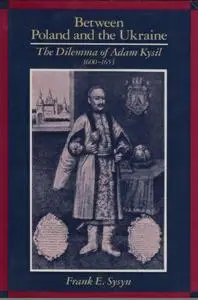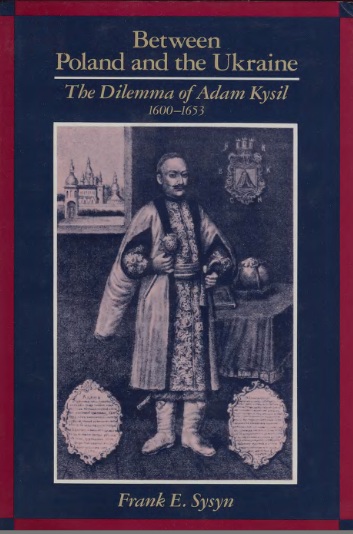Frank Sysyn, " Between Poland and the Ukraine The Dilemma of Adam Kysil, 1600-1653"
1986 | ISBN-10: 0916458083 | 321 pages | Djvu | 7 MB
1986 | ISBN-10: 0916458083 | 321 pages | Djvu | 7 MB
Scholars interested inquestions of national consciousness and its development within the PolishLithuanian commonwealth will find Frank Sysyn's book a welcome addition to the sparse literature on the subject. Although the author chooses to describe his m-onograph as a biography of
Adam Kysil, a prominent s atesman of the Polish-Lithuanian commonwealth, the weight of his discussion falls on Kysil's self-identity as a Ruthenian Orthodox nobleman, transforming the book into a case study of that elite group that maintained its cultural and historical inks to
Kievan Rus' as well as a sense of self-identity as an ethnically, linguistically, religiously, and culturally distinct community within the commonwealth. Sysyn concentrates on the period in the history of this elite group when a Cossack state was emerging (1648) and when, according to the author, Orthodox Ruthenians like Kysil, active in preserving their heritage, faced the dilemtma of choosing between remaining loyal citizens of the commonwealth and losing their heritage or aligning themselves with the Cossacks, the proclaimed defenders of Ruthenian Orthodoxy against militant Polish Catholicism.
Sysyn's discussion of Kysil's Ruthenian dilemma is highly interesting and provocative, but it has one major flaw-it fails to prove that such a dilemma ctually existed in Kysil's mind or even in the minds of other Ruthenians. Missing are Kysil's letters to family members, fellow
Ruthenians, Polish noblemen, Orthodox clergymen, or even Cossack elders, in which he identifies or even hints at the difficult choice confronting him. Missing also are citations to Kysil's works-listed in the bibliography but never quoted by Sysyn–in which Kysil argues for or against one side or the other, or vacillates omewhere in between. We are certainly given ample illustration of Kysil's frustration i his role as chief negotiator with the Cossacks. Hie found himself caught between Polish and Cossack perceptions and expectations of him-both sides claimed him as "theirs" and both sides doubted his loyalty-but Sysyn presents no proof that
Kysil faltered in his loyalty to the commonwealth. Without such proof one cannot help wondering how much the dilemma Sysyn describes is one of his own perception rather than Kysil's.
This is not to say that the emergence of a powerful Cossack force claiming to be the defender of Orthodoxy was not cause for introspectioni a d reexamination of their own value system among Orthodox Ruthenians. But reexamination witlh a view toward finding the best means of preserving their distinctiveness led many to reconsider tthe solution offered in Uniate Catholicism, rather than to consider the Cossack solution. The latter equired their integration i to a socially alien system. The Uniate Roman Catholic solution guaranteed the Ruthenians their political and social status; assured them of their ethnic, cultural, linguistic, and religious separateness; and extended security from interference intheir internal affairs by the Orthodox Russian tsar and the Roman Catholic king. Many Orthodox Ruthenians had already embraced that solution by the seventeenth century and, as Sysyn points out, Kysil and his Ruthenian contemporaries were ready to follow suit. They did not because of the Cossack's opposition to an act of union betweeni the Orthodox and Uniate churches that gave some Orthodox clergymen an incentive for backing away from the agreement. Sysyn's dismissal of Uniate Catholicism as a viable solution and his criticism of all Orthodox Ruthenians who chose to remain faithfuil tothe commonwealth as lacking vision and selling out to the Liachy (Romian Catholic Poles) constitutes an unduly harsh and unfair judgment of Uniate and Orthodox Ruthenians alike, Kysil included, who opted for the social and political system of the commonwealth but who preserved their cultural and national identity. Bearing in mind the Russification that befell many who went for the Orthodox Cossack solution-which Sysyn argues was the "Ukrainian" solution-and the fact that
Ukrainian ational reawakening in the nineteenth century took place in Galicia among Uniate
Catholics, history does not support Sysyn's conclusion that the sole means seventeenth century
Ruthenians had for self-preservation was to join Khmelnytskyi's Cossack movement.
The author is to be commended for tackling the controversial and difficult issues of national



